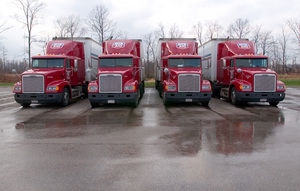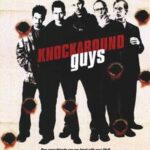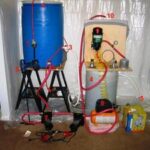Hot Shot trucking refers to a truck smaller then the usual semi truck and trailer. There are many varieties of setups that fall into this group, but one of the most common setups is a 1-ton diesel dually pulling a 40′ gooseneck trailer. Hot Shot, also known as LTL (Less Then Truck Load), can amount to one piece not taking up the space or weight of a standard 80,000 GVW semi, or it can be a full trailer load that is low enough in weight to still be hauled by a smaller rig.
A 1-ton truck with 40′ gooseneck will be licensed with apportioned plates just like larger trucks. They’re usually licensed for 36,000 lbs, that’s truck trailer and the load placed on the trailer.
Lets get started, you’ve made the decision to drive Hot Shot, what’s next? Before you head out to buy that new dually and trailer, the first thing to figure out is who are you going to haul for. You could get your own authority, set up your own customer base, arrange your own loads and be completely independent. Not the route I’d recommend for someone new to the business. As the commercial states, running your business will get in the way of running your business.
Signing on, or leasing yourself and your rig, to a trucking company is the best choice you can make. They take care of all the paperwork, billing, collecting moneys due you, and best of all they find the loads for you. Of course they don’t do this for free, but it’s a fair deal. Generally speaking you can expect that you will receive 75% of the freight charge and they will keep 25%. There will be some other charges against your portion as well, insurance, your plates. What it boils down to is you can expect to actually see about 65% of the freight charges paid to you within a week of your making the haul.
After you’ve chosen a trucking company to sign on with, then it’s time to talk with the terminal manager, submit your application, and get accepted. They will send you out for a DOT physical, and a drug test. Only after you’ve completed these steps should you consider going out and buying your rig. The reasoning for this is that you want to buy a rig that meets the requirements of the company you’ve chosen. Buying the wrong rig may severely limit the number and quality of loads your able to haul. It is to your advantage to buy the most flexible rig you can, it will ensure you stay busy.
The most common trailer is a dual tire, tandem axle with a 24,000 lb gross weight rating. One very handy option to consider when you order your trailer would be a spring loaded dove tail, or beaver tail on the rear of the trailer. They can be set up to make the deck a full 40′ of level space, pretty much a requirement for most shippers. The trailer can also have that rear section lowered to provide a more gradual slope and shorter ramps for loading vehicles and mobile equipment. Flexibility, the larger the variety of loads you can accommodate, the busier you will remain.
The truck is your next essential item. If you already drive a dually, hopefully it’s a diesel. If it isn’t, consider trading it off, a gas engine won’t last long enough to get to the end of the payments. Over the years, I’ve witnessed a number of big mistakes when it comes to choosing a truck. All were out of business in short order, or created a less then perfect situation for the driver. You’ll see plenty of classy pickups with fancy paint, and all the goodies out there. Sure they’ll do the job, but this is a job and should be considered that. Fancy usually costs a lot of extra money, where as functional will make you money.
If at all possible forgo a standard pickup truck, a flatbed is way more versatile. Buy a cab and chassis and have an 11′ flatbed installed that has a gooseneck ball mounted below deck level. The next load that’s too small for a 40′ trailer will be yours, while the guy with the fancy pickup sits and waits. Be sure you get a husky receiver hitch on that bed, and buy a pintle hook as well as all sizes of hitch ball. Once again, the more ways you can get the job done, the busier you will stay. It may even be to your advantage to build a stout set of side boards too, I know I put them to good use when I was driving.
If your shopping for a truck, get the biggest and longest one you can find. A crew cab is a lot more comfortable when you settle down for the night. Sleeping across a set of bucket seats will get old after one night. I recommend taking the rear seat out, and building a nice bed in its place. Without a good nights sleep you’ll burn out in short order. The reason for the longest truck is simple, they ride better, a short truck will beat you to death. Take the time to set up your truck so that you’ll be as comfortable as possible when your stopped for the night. Motels are out of the question, your profit margin won’t allow you to remain in the black unless you live in your truck. Make up a set of blackout shades so you can sleep. Truck stops are well lit, and in a smaller truck you’ll be on display to the world unless you block out the windows. Simple cardboard cut to fit in place does a real nice job of providing privacy.
You might want to consider 4 wheel drive. You won’t use it a lot, but if you run up north in the winter, or work hauling for the oil and gas drilling companies, you will spend enough time off road to make it a life saver. Nothing worse then getting stuck in the mud on a job sight. Guaranteed contractors will think your a helicopter and want their load in the most off the wall places you can imagine.
Financing that truck is another area to use caution. I actually knew a driver who leased a new truck from the local Ford dealer. It was a 40,000 mile for 4 year lease, after about 4 months he had used up the 40,000 miles and the over charge for exceeding the agreed upon 40,000 miles put him immediately out of business. Another driver I met found a financial outfit in Montana that would buy the truck he wanted and lease it back to him. At the end of the lease he would pay a lump sum to buy back the truck from the leasing company. The end result was he was stuck with that truck for four years and at the end, he didn’t even own it. The best solution is to buy your truck out right, standard loan payments, scheduled over a period of no more then four years. The truck will be worn out if you keep it till the end of the payments.
Remember, you will most likely be putting 100,000 miles or more a year on your truck. It’s up to you to figure out how long you will drive that truck and how your going to go about getting a replacement. Diesel 1-tons can last about 300,000 miles without costing a fortune in repairs. Reliability is mandatory, if your truck is broke down, your going in the hole.
When I drove, I figured on trading in my truck every year just before it reached the 100,000 mile mark. At that time it would have depreciated about $8-9,000, and I just considered it part of the cost of doing business. Not to say this is the only workable way to do it, but I was never stranded on the road, and I was able to keep my repair costs fairly low.
To build up equity in your truck you need to make as high a payment as you can afford. It’s real easy to get upside down in the trucking business, owing more money on your truck then it’s worth if you sold it or traded it off.
With truck and trailer in hand, now what. Both truck and trailer must be inspected and displaying a sticker that shows they meet the requirements of the DOT. Be sure you get the proper inspection, or your trucking company will send you back. One sticker may satisfy the federal DOT, while another is required if your planning on staying within your state.
After you’ve bought the required chains, binders, rachet straps, and possible hazmat placards that your company will require, it’s time to fill out your log book and go to work. When you receive your first load, make sure you understand what is expected of you before you leave the terminal. Double checking and asking questions will prevent any misunderstanding or mistakes on your first run. After that first trip, it will become routine in short order, as time goes on your dispatchers will get to know you, and the types of loads that you can handle. The more you can do for them, the more they will do for you.
Go out there and be successful, keep the shiny side up and ease on down the highway.






